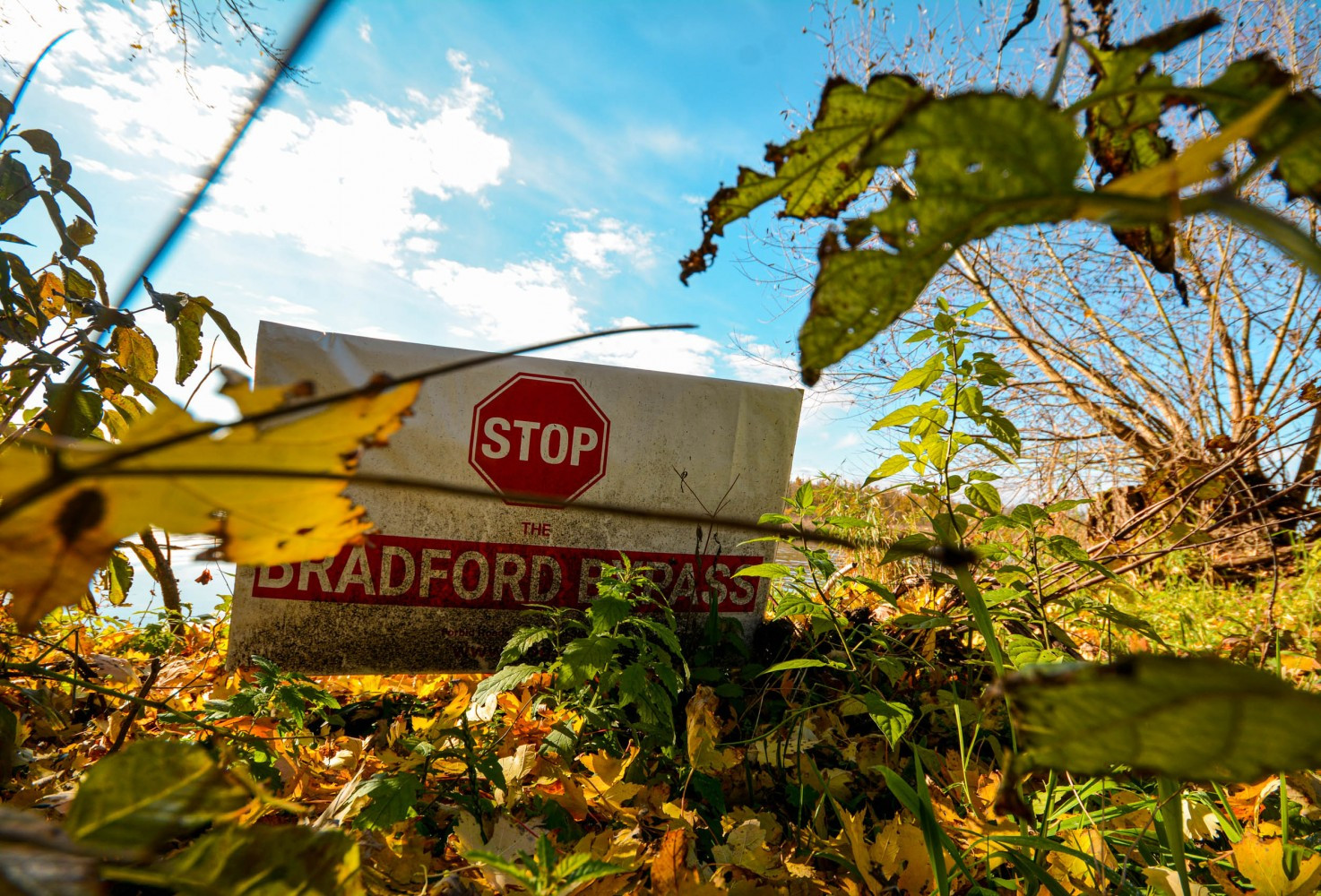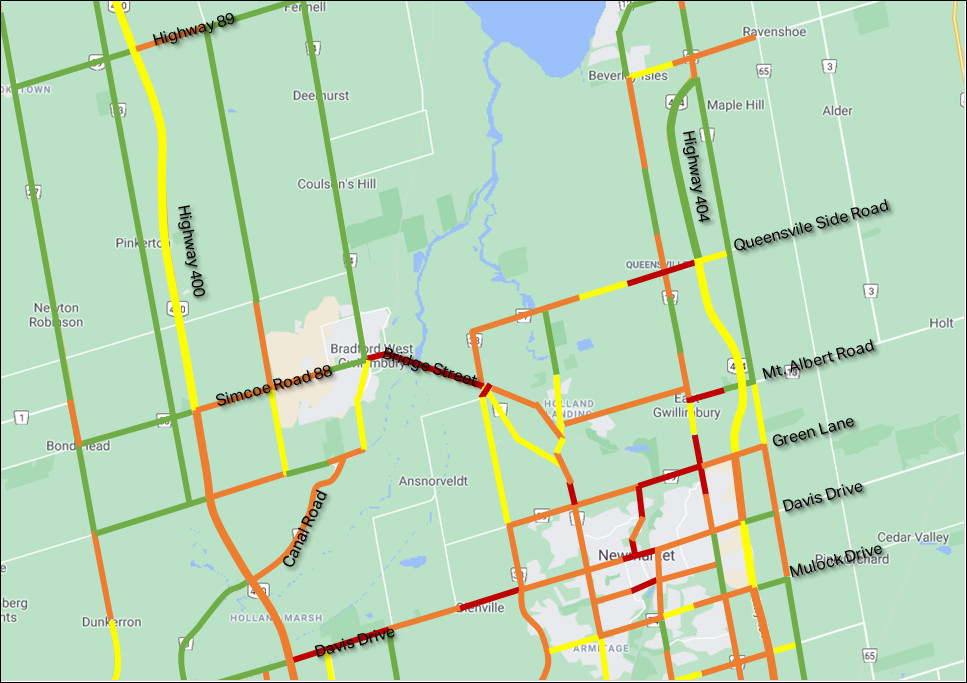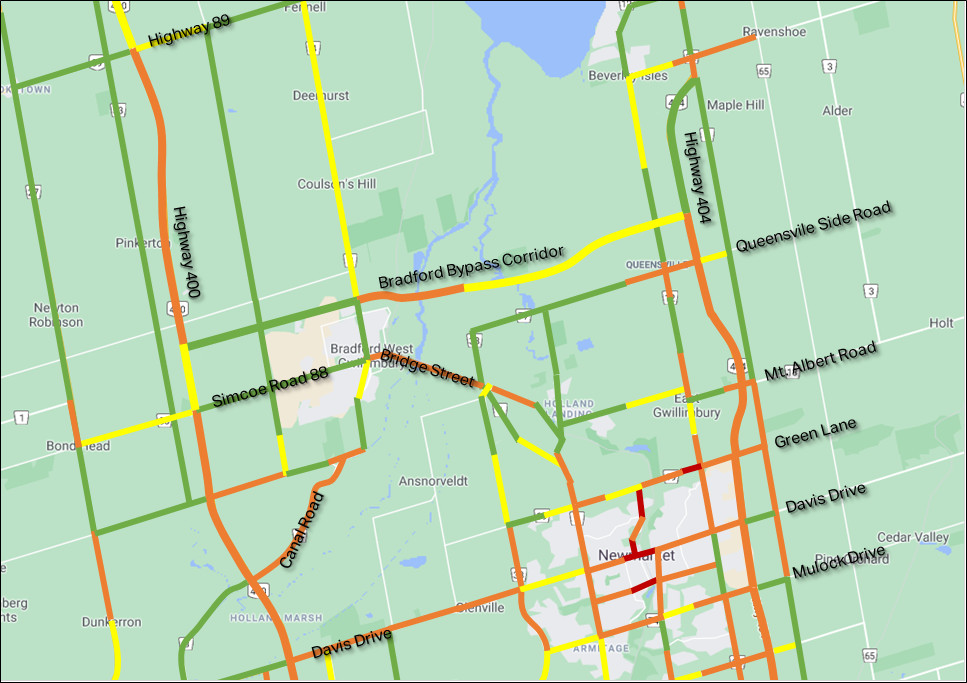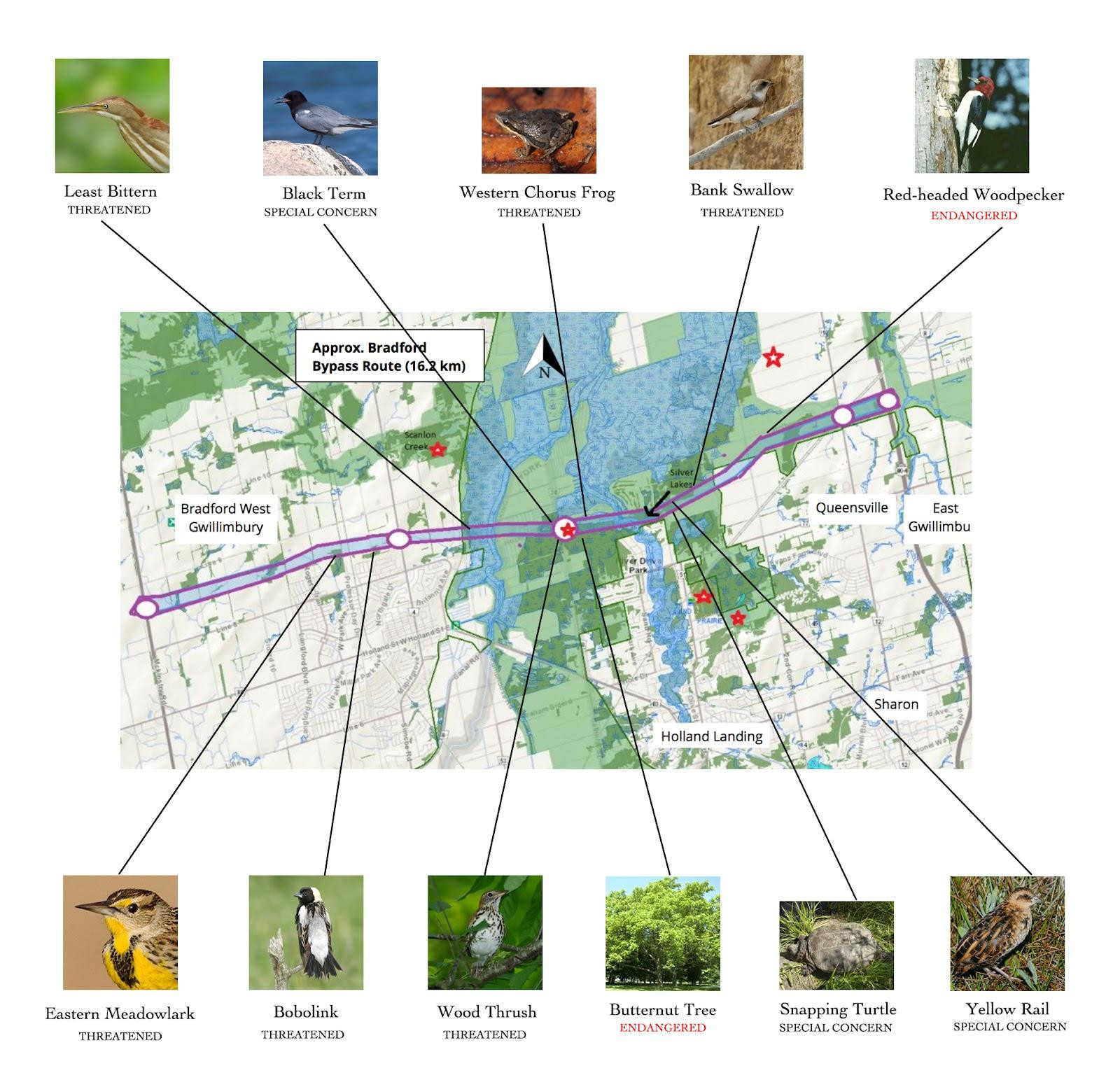
Court ruling on Bradford Bypass highlights Liberal government’s empty words on environmental protection
A federal court has ruled Canada’s Environment Minister Stephen Guilbeault failed to take the proper steps when deciding not to designate the Bradford Bypass for a federal impact assessment. The ruling opens the door for a subsequent request that could put a hold on the Ontario PC government’s hurried push to build the 400-series highway through the provincially significant Holland Marsh wetland complex.
The court decision follows a legal challenge from local residents and environmental groups filed last year after the Liberal government in Ottawa twice declined to designate the Bradford Bypass for a federal impact assessment, a decision which would have subjected the 16-kilometre bypass connecting highways 400 and 404 just south of Lake Simcoe to a much more rigorous analysis than the “streamlined” strategy being used by the PC government. The new process has been labelled grossly inadequate by experts and environmental organizations for lacking proper study and timelines.
The federal Impact Assessment Act empowers the Impact Assessment Agency to review a range of projects across the country to ensure they conform with policies around sustainability, environmental protection and Indigenous rights.
Projects the Agency designates for review effectively fall under the federal government’s jurisdiction for approval.
In 2021, the federal government, under former environment minister Jonathan Wilkinson, declined to designate the Bradford Bypass project, but at the same time placed Highway 413, another of the Ford government’s mega highway projects, under its jurisdiction. The move confused local residents and experts who pointed out many of the same concerns the Minister held up as reasons for designating Highway 413—impacts on species at risk and Indigenous heritage—exist with the Bradford Bypass.
In challenging this 2021 decision, local groups, including the Rescue Lake Simcoe Coalition, Forbid Roads Over Green Spaces (FROGS), and the Simcoe County Greenbelt Coalition, supported by lawyers from Ecojustice, argued the minister did not take into account the significant impacts the highway would have on the surrounding natural area, including crucial fisheries and wetlands. They also argued the federal government’s intervention was necessary after the PC government introduced its modified EA process, which exempts the Bypass from a number of crucial studies. The PCs are relying on an environment assessment for the Bypass completed over 20 years ago in 1997.
But this subsequent request was denied a by Minister Guilbeault, who stated there had been “no material change” to the project since the first designation request to warrant the federal government’s involvement.
It’s a statement Federal Court Justice Angela Furlanetto disagreed with, and one Guilbeault failed to adequately explain, or provide proof that he even considered the detailed information provided by FROGS and other local groups.
“The administrative nature of the decision does not overcome the requirements to demonstrate that the decision-maker grappled with the key issues raised, or to provide a decision that demonstrates transparency, intelligibility and justification,” Justice Furlanetto writes in a decision released on April 20. “In this case the statutory objectives of encouraging public participation and transparency reinforce that some greater explanation was required as to why the Further Request was not considered to raise material changes or new information...In my view, the Decision does not meet the threshold for transparency, intelligibility and justification and is unreasonable as a result.”
In a press release following the decision, community groups said they feel vindicated.
“We’re not asking for impossible things. We’re asking for proper studies to be completed including if there are cheaper, more effective solutions to ease traffic congestion,” states Bill Foster, Chair of FROGS. “We want a value for money audit to ensure that spending $4 billion on this highway is the best use of public funds during funding crises in long term care, hospital, schools and social services. It’s a shame that the public has to be the babysitter for the province on this massive project because they don’t seem to want to take full responsibility for how it will really impact us. They’d rather cut corners.”
WITHOUT BYPASS

WITH BYPASS

The PC government is touting the traffic congestion relief the Bypass will provide, but has failed to explain the findings of its own traffic studies which indicate the long-term benefits will be minimal.
(Government of Ontario)
The 16-km highway, a project that has been talked about in the Bradford area and studied by subsequent provincial governments for decades, will cause devastating impacts to the surrounding watersheds. The 8-lane strip of pavement will bisect the Holland Marsh Wetland Complex—the largest wetland within the Lake Simcoe Watershed. The area performs vital naturally occurring ecosystem functions such as flood mitigation, water filtration, and habitat and breeding protection for countless species, including many that are listed as at risk.
Justice Furlanetto criticized Guilbeault for failing to follow basic tenants laid out in the Impact Assessment Act, the preamble to which states “the Government of Canada recognizes the importance of public participation in the impact assessment process” and “recognizes that the public should have access to the reasons on which decisions related to impact assessments are based”.
She described the response from Guilbeault to the subsequent designation request as completely inadequate, noting that he made no mention of the central arguments being offered by the community groups in their request, or provide any explanation given why elements of the request were or were not considered.
To make matters worse, the Impact Assessment Agency admitted to the court that “the Agency did not conduct a substantive review” of subsequent information provided by the community groups relating to the cumulative impacts the highway will have on the Lake Simcoe Watershed.
Government lawyers attempted to defend this lack of analysis by stating elements of the subsequent request—such as the cumulative effect of ongoing development in the Lake Simcoe area—are only considered after the project has been officially designated for an assessment. However, as the Justice points out, this is inconsistent with the Agency’s own guidance documents provided to those looking to prepare designation requests which identifies cumulative effects as a relevant factor for consideration in its decisions. Further, this statement is inconsistent with the initial decision not to designate the Bradford Bypass for an impact assessment which considered cumulative effects (but noted the information was insufficient to sway its decision). It does not appear the Impact Assessment Agency, in its memo to Guilbeault regarding the subsequent request, considered cumulative impacts.
“It is not clear from the Decision that the Minister considered cumulative effects and the Agency Memo suggests that it was not considered,” Justice Furlanetto writes. “This fails to reveal a rational chain of analysis. The omission of any mention or justification in the Decision as to how the Minister handled the submission on cumulative effects and why it did not accept this as a material change to the request creates a fundamental gap in the Minister’s response.”
The Minister Guilbeault and the Impact Assessment Agency provided little in the way of comment in response to the ruling.
“Following the recent judicial review from FROGS, the Federal Court has indicated that the reasons for the subsequent declined request were not sufficiently clear and transparent, though they did not find the decision to be unlawful and awarded no costs of the application,” Christopher Walters, executive director of the communications division for the Impact Assessment Agency wrote in an emailed response. “The legal team at the Impact Assessment Agency is currently reviewing the Federal Court’s finding, and will respond in due course.”
For a government that markets itself as environmentally conscious and committed to tackling climate change and the ongoing biodiversity crisis, this is a startling lack of attention to a project that presents significant threats to one of Ontario’s crucial watersheds.
On World Wildlife Day (March 3), Minister Guilbeault released a statement noting “Protecting Canada’s environment and its biodiversity is a priority for the Government of Canada…We are putting words into action to protect Canada’s wildlife by listening to our scientists and Indigenous peoples and acting quickly to help threatened and endangered species.”
The words ring hollow when considering his total abdication of responsibility on the Bradford Bypass and its impacts on species at risk.
A previous investigation by The Pointer found at least 11 different species at risk in the path of the Bradford Bypass, including six threatened species, two endangered, two listed as special concern and one “restricted species”. These species are those that are either sensitive to commercial exploitation, like trophy hunting, or their habitat is so threatened, that their locations are kept secret from the general public as to avoid disturbance. There are also six different nesting colonies for a variety of water and wading birds directly in the highway’s path. This is by no means a definitive list. Expert sources have told The Pointer the number is more than likely much higher as animals move through these green space corridors, of which the Holland Marsh wetland complex is one of the most significant in the area. The Bradford Bypass would essentially be an eight-lane highway cutting it in half. Many of these species, particularly threatened and endangered turtles, like the blandings turtle which has been spotted just north of the route, are extremely vulnerable to road mortality, with provincial documents noting it is the most serious threat to these animals.

A number of species at risk rely on the wetland complex the Bradford Bypass will cut in half.
(Joel Wittnebel/The Pointer)
On Earth Day (April 22) Prime Minister Justin Trudeau stated “To build a clean, healthy future, we know we have to take action on climate change.”
Yet, his government’s continued failure to step in on the numerous environmentally destructive decisions of Doug Ford’s PC government indicates a complacency toward the climate crisis that puts all Canadians at risk.
Aside from the prime land that would be lost — eliminating natural climate solutions that help us battle climate change free of charge — Ford’s two highways would add untold amounts of greenhouse gases into the atmosphere. An earlier study completed by Environmental Defence estimated Highway 413 alone would add 17 million tonnes of CO2 to the atmosphere by 2050. The government of Canada’s most populous province is actively working against Canada’s climate goals through not only these two highway projects, but its entire environmental agenda that places developer interests over that of wildlife, greenspace and wetlands. Yet Trudeau has remained silent. Minister Guilbealt has recently criticized the PC government’s weakened emission targets, but the criticisms are not followed by action his Ministry is able to take to halt PC plans that will damage the planet and exacerbate the climate crisis.
“An eight lane highway is a permanent decision that will plague our waterways, our air and our Greenbelt for generations to come. We cannot afford to get this decision wrong,” states Claire Malcolmson with the Rescue Lake Simcoe Coalition.
Advocates are currently considering a subsequent request to designate the Bradford Bypass for a federal impact assessment. However, with early works on the project underway, it’s unclear if this will make the project ineligible for federal intervention. The Impact Assessment Act states projects can not be designated if work has already commenced in any significant way.
“Corners have been cut on an environmental assessment based on studies completed in the 80s and 90’s,” Executive Director of the Simcoe County Greenbelt Coalition, Margaret Prophet, said.
“The budget for this highway has ballooned 400% from original estimates to $4 billion. No studies are being done to protect Lake Simcoe, the Greenbelt or our climate. Legal requirements to protect people from air pollution and water contamination have been rendered virtually meaningless. Who is really running the show, and when can we count on our federal and provincial governments to serve the public as they’ve pledged?”
Email: [email protected]
Twitter: @JoeljWittnebel
At a time when vital public information is needed by everyone, The Pointer has taken down our paywall on all stories relating to the pandemic and those of public interest to ensure every resident of Brampton and Mississauga has access to the facts. For those who are able, we encourage you to consider a subscription. This will help us report on important public interest issues the community needs to know about now more than ever. You can register for a 30-day free trial HERE. Thereafter, The Pointer will charge $10 a month and you can cancel any time right on the website. Thank you
Submit a correction about this story


